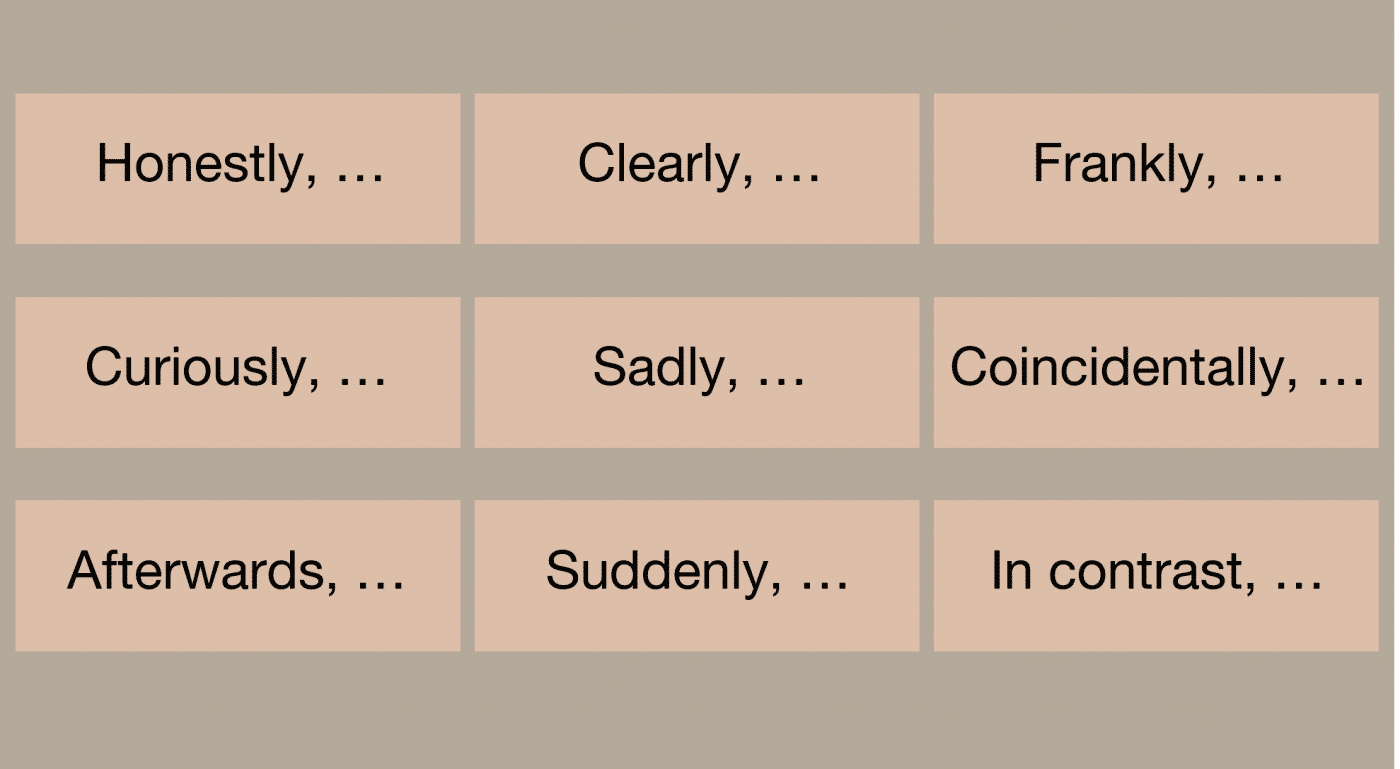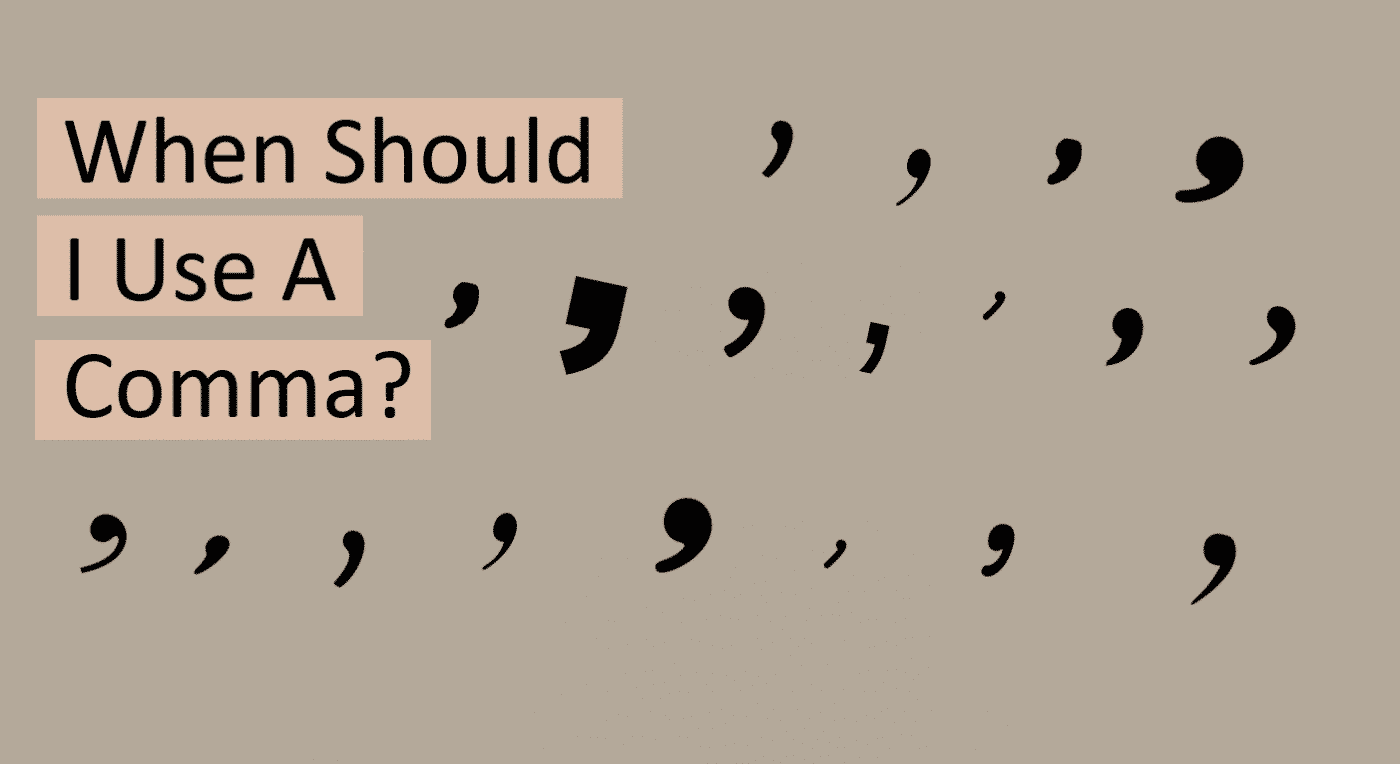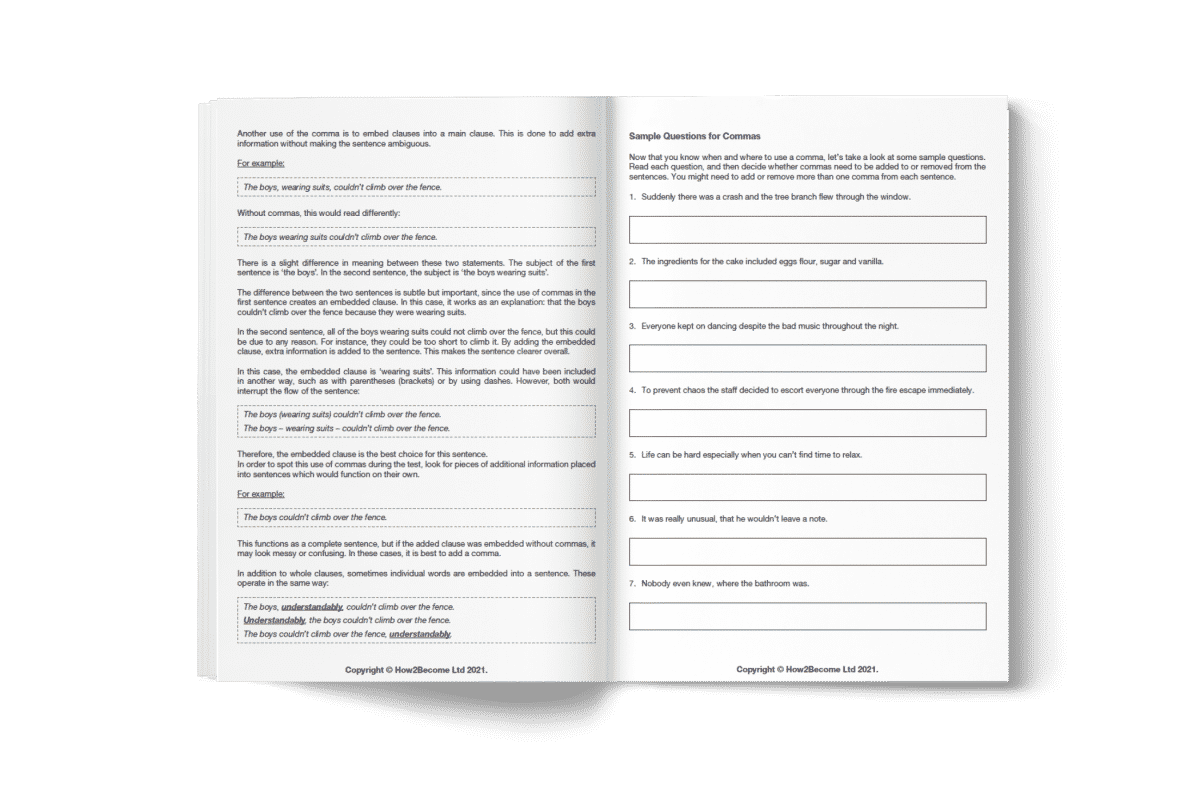A comma is often used to distinguish main clauses from secondary or subordinate clauses. Commas are frequently misused and therefore you shouldn’t use them unless you are sure that they’re appropriate. Instead, resort to employing full stops if you aren’t sure whether a comma would be correct. If part of a text feels complete, or contains a subject and verb, it is safe to define it with a full stop.
When To Use A Comma
He mustered a sigh of relief, his car was right where he left it in the car park.
The comma here is used incorrectly. The first part of the sentence (He mustered a sigh of relief) contains a verb (mustered) and a subject (he). Therefore, it should be its own sentence:
He mustered a sigh of relief. His car was right where he left it in the car park.
Using Commas With Adverbs
Commas can also be used to add a preface to a sentence, with a word such as ‘however’ and ‘unfortunately.’ This can be used to set the tone of a sentence and link it to a previous sentence:
His car was right where he left it in the car park. Unfortunately, he couldn’t find his keys to unlock it.
These sentence adverbs add context to the sentence which follows it. In this case, use a comma after the sentence adverb.
Here are some other sentence adverbs, which require a comma to be placed after them:

Using Commas In Lists
Commas are also used to separate the items of a list which appear in the text rather than as bullet points.
For example:
The repairs needed for the car included two new tyres, replacement headlight bulbs, new brake pads and an oil change.
Each item in the list is followed by a comma to distinguish them. Generally, the final item on the list uses the connective ‘and’ rather than another comma (e.g. new brake pads and an oil change).
The Oxford Comma
When writing a list you may also encounter the Oxford comma. The Oxford comma is the last comma in a list before a conjunction (such as ‘and’ or ‘or’).
For example:
The repairs needed for the car included two new tyres, replacement headlight bulbs, new brake pads, and an oil change.
In British English it is neither right nor wrong to use an Oxford comma but either way you must be consistent.
Certain publications may have a preference you must use for their writing style but for your own work it is your choice which style you prefer.
An Oxford comma can be useful for avoiding confusion or ambiguity. Take a look at the following two sentences:
My perfect day out would be with my parents, William Shakespeare and Marie Curie.
My perfect day out would be with my parents, William Shakespeare, and Marie Curie.
In the first example it could be misconstrued that the speaker’s parents are William Shakespeare and Marie Curie. This confusion is avoided by the addition of an Oxford comma.
Changing Sentence Structure With Commas
Commas can be used to change the order of a sentence. By changing how the sentence is structured, variety can be added to the text.
For example, read the following sentence:
Orderly queues were formed outside of the main hall in order to prevent congestion in the corridors.
This can be restructured using a comma to read as:
In order to prevent congestion in the corridors, orderly queues were formed outside of the main hall.
Both sentences make sense and flow well, but variety can keep a sentence interesting.
Using Commas To Embed Clauses
Another use of the comma is to embed clauses into a main clause. This is done to add extra information without making the sentence ambiguous.
For example:
The boys, wearing suits, couldn’t climb over the fence.
Without commas, this would read differently:
The boys wearing suits couldn’t climb over the fence.
There is a slight difference in meaning between these two statements. The subject of the first sentence is ‘the boys’. In the second sentence, the subject is ‘the boys wearing suits’.
The difference between the two sentences is subtle but important, since the use of commas in the first sentence creates an embedded clause. In this case, it works as an explanation: that the boys couldn’t climb over the fence because they were wearing suits.
In the second sentence, all of the boys wearing suits could not climb over the fence, but this could be due to any reason. For instance, they could be too short to climb it. By adding the embedded clause, extra information is added to the sentence. This makes the sentence clearer overall.
In this case, the embedded clause is ‘wearing suits’. This information could have been included in another way, such as with parentheses (brackets) or by using dashes. However, both would interrupt the flow of the sentence:
The boys (wearing suits) couldn’t climb over the fence.
The boys – wearing suits – couldn’t climb over the fence.
Therefore, the embedded clause is the best choice for this sentence.
In order to spot this use of commas during the test, look for pieces of additional information placed into sentences which would function on their own.
For example:
The boys couldn’t climb over the fence.
This functions as a complete sentence, but if the added clause was embedded without commas, it may look messy or confusing. In these cases, it is best to add a comma.
In addition to whole clauses, sometimes individual words are embedded into a sentence. These operate in the same way:
The boys, understandably, couldn’t climb over the fence.
Understandably, the boys couldn’t climb over the fence.
The boys couldn’t climb over the fence, understandably.
Using Commas In Dialogue
Finally, commas are used when writing dialogue. The comma comes after the final word of text, before the quotation marks appear:
Mrs Brown exclaimed, “Students are failing to understand the importance of the First World War.”
In other cases, the dialogue may be separated by directions about the speaker and their tone. In this scenario the commas are placed differently.
“Students are failing to understand the importance of the First World War,” Mrs Brown exclaimed. “This must change in the near future.”
If this structure is used, then the comma appears at the end of the first piece of dialogue, before the speech marks end and the speech directions are given.
Download all this information
+ 15 practice queStions to test your understanding of COMMAS!
- When to use a comma;
- Using commas with adverbs;
- Using commas in lists;
- The Oxford comma;
- Changing sentence structure with commas;
- Using commas to embed clauses;
- Using commas in dialogue
- 15 practice questions to test your understanding of when and how to use commas;
- Answers for all questions.
SPECIAL OFFER: £5.00 | TODAY’S PRICE ONLY: £1.50

